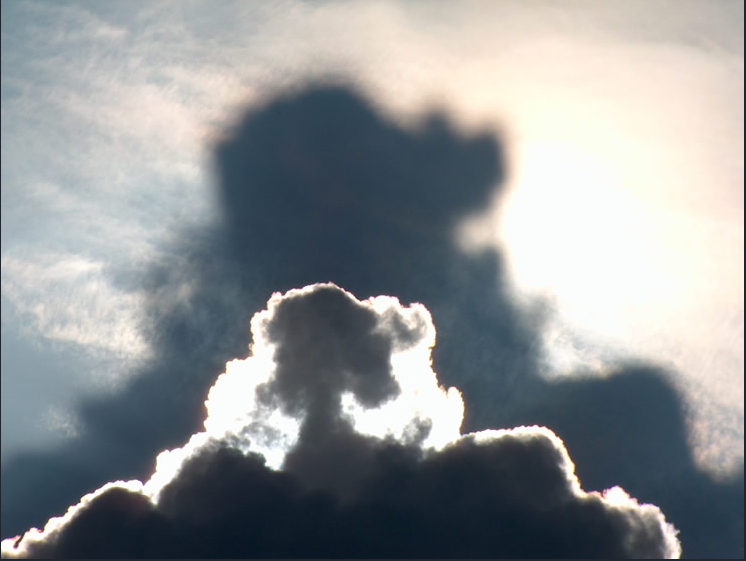Cloud Shadows
Cloud Shadows: Unraveling the Phenomenon
Have you ever looked up at the sky and noticed a cloud seemingly casting a shadow upwards? It's a peculiar sight, considering the sun always shines downwards. How can shadows defy gravity? In this article, we will delve into the fascinating world of cloud shadows and shed light on the science behind this optical illusion.
When we observe a cloud shadow, what we are actually seeing is the shadow being cast on a layer of haze that is closer and lower to us. It's as if we are peering through the back of a cinema screen, catching a glimpse of this intriguing phenomenon. One clue that distinguishes it from a regular shadow is its size; cloud shadows often appear larger than the clouds themselves due to their proximity to us.
To better understand cloud shadows, let's explore the science behind their formation. When sunlight encounters a cloud, it undergoes a process called scattering. This scattering occurs when the particles within the cloud, such as water droplets or ice crystals, disperse the sunlight in various directions. As a result, some areas of the sky become brighter where the scattered light is more intense, while others appear darker in the shadowed regions.
The shape and size of a cloud shadow depend on several factors, including the altitude and density of the cloud, as well as the angle of the sunlight. Higher clouds tend to cast longer shadows, while denser clouds create darker shadows. Additionally, the angle at which the sunlight interacts with the cloud plays a significant role in determining the length and direction of the resulting shadow.
It's worth noting that cloud shadows can manifest in different forms, each with its own unique characteristics. For instance, some cloud shadows may appear as distinct, well-defined shapes, while others may exhibit softer edges or diffuse boundaries. These variations arise from variations in cloud composition and structure, as well as atmospheric conditions.
Cloud shadows not only captivate our attention but also provide valuable insights into the atmosphere's behavior. By observing the movement and patterns of cloud shadows, scientists can gain valuable information about the wind direction and speed at different altitudes. This data contributes to weather forecasting and climate modeling, helping us better understand the complex dynamics of our planet's atmosphere.
Next time you find yourself gazing up at the sky and notice a cloud shadow, take a moment to appreciate the intricate interplay of light, clouds, and haze that gives rise to this mesmerizing phenomenon. It serves as a reminder of the wonders that surround us and the hidden complexities waiting to be unraveled.
In conclusion, cloud shadows are not illusions, but rather a result of the interplay between sunlight, clouds, and atmospheric particles. These shadows, cast on lower layers of haze, appear larger than the clouds themselves due to their proximity to the observer. The formation and characteristics of cloud shadows depend on factors such as cloud altitude, density, sunlight angle, and atmospheric conditions. By studying these shadows, scientists gain valuable insights into atmospheric dynamics and improve our understanding of weather patterns. So, the next time you witness a cloud shadow, take a moment to marvel at the intricate dance of light and shadow occurring above us.

Cloud Shadow imaged by Henry Kunz from the Diemtigtal in the Bernese Oberland, Switzerland. ©Henry Kunz, shown with permission.
We often see a cloud apparently casting a shadow upwards. And yet the sun always, or nearly always, shines downwards. Shadows therefore cannot beam up.
The shadow is being cast on a nearer and lower layer of haze and we see it as through the back of a cinema screen. One clue is that the shadow appears larger than the cloud -- It is closer to us.
Note: this article has been automatically converted from the old site and may not appear as intended. You can find the original article here.
Reference Atmospheric Optics
If you use any of the definitions, information, or data presented on Atmospheric Optics, please copy the link or reference below to properly credit us as the reference source. Thank you!
-
<a href="https://atoptics.co.uk/blog/cloud-shadows-3/">Cloud Shadows</a>
-
"Cloud Shadows". Atmospheric Optics. Accessed on November 26, 2024. https://atoptics.co.uk/blog/cloud-shadows-3/.
-
"Cloud Shadows". Atmospheric Optics, https://atoptics.co.uk/blog/cloud-shadows-3/. Accessed 26 November, 2024
-
Cloud Shadows. Atmospheric Optics. Retrieved from https://atoptics.co.uk/blog/cloud-shadows-3/.